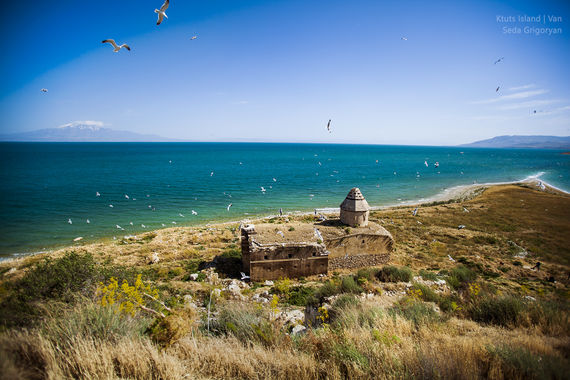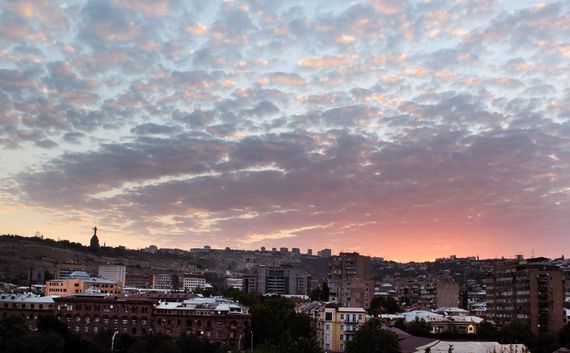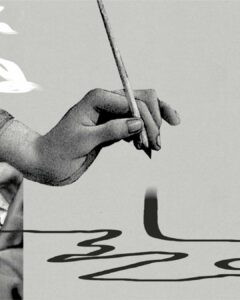“Wake up, it’s a revolution!” My mother says.
“In Turkey? I know,” I say and try to go back to sleep.
It was two days after the coup in Turkey, where our Turkish friends, who had just performed at a music festival in Yerevan, were caught between the crossfire in Ankara. A month earlier I had been in Western Armenia where I witnessed the tensions between Kurdish rebels and police. I had kept all the impressions from that trip locked up in a boiling jar, since I got dragged into organizing the music festival as soon as we crossed back into Armenia from the Turkish (Georgian) border. So when my mother tried to wake me up that morning with news of a revolution, Turkey was naturally the first option that came to mind.
Memories of the Future from Seda Grigoryan on Vimeo.
The events of that month last year seemed to have no end and sleep was the only time I could let myself reflect on all my thoughts about Western Armenia — of a past that lives on, a present that kills hope and my place in the crossroads of time.
“No, it’s happening here!” My mother continued, finally waking me up on the morning of July 17.
Scrolling down my Facebook feed I saw the video messages of the Sasna Tsrer from the sieged police station. Not really understanding what was going on, I contacted my colleagues and headed to the CivilNet office in downtown Yerevan, where I stayed almost 24/7 for the following two weeks.
During those weeks, there was not a single moment when I could pause, take a deep breath and observe what was going on around me. We, the press, were part of the evolving story in my city. We lived through all the quiet and intense moments together with the members of the Sasna Tsrer, the police officers and the protesters who existed and acted through our lenses.
Following the protests at Freedom Square, crossing the barricades of exploding molotov-cocktails in Sari Tagh where no one dared to go, standing between the protesters and the police through the deafening noise of stun grenades on Khorenatsi Street, comforting the relatives of the Tsrer waiting at the doorsteps of hospitals late at night for news about the injured, and rushing inside the sieged police station to meet the fighters and seeing the rage and sacrifice in their eyes and thinking: “History is being created today and I’m a part of it. Maybe it’s our time to act, finally!”


Running through the teargas smoke and the blinding light of the explosives thrown by the police, I was having flashbacks to Western Armenia in my head. The noise of stun grenades flying above our heads merged with the cries of seagulls that would swoop down brazenly, almost touching my hair. Sitting on top of the hill, hypnotized by the meditative cries of the gulls coming from all corners of Ktuts Island in Lake Van, I was unable to turn my camera off and tear my eyes away from the magical view. The island was covered in white with the birds hovering just above the ground, while the deep blue water hugged the shores of the island, the crashing waves moving in from the slopes of Mount Sipan, where my ancestral village Aljavaz lies. I didn’t have a chance to go to that side of the lake, but the water filled in the distance which my great-grandparents used to sail across to celebrate Christian holidays at the monastery on the island.


Our ears got used to the explosions, so when a suspicious silence replaced the deafening noise on Khorenatsi Street, we knew it was a bad omen. The police lines were getting thicker.
It took me a few seconds to realize that the blow to my head was caused by an angry seagull descending towards me. The bird was making a particularly strange and loud wail, looking me in the eyes and aiming to hit me again. I covered my head while it chased me down the hill, accompanied by others. The achingly beautiful vision that had opened before me moments earlier as I sat on top of the hill crashed into pieces. I felt fear. I felt unwanted on my Land.
The police broke through the lines of the protesters, detaining everyone they could catch on their way, dragging people away by their hands or feet. There was uncontrolled violence and brutality; in a matter of minutes dozens of people were injured right before our eyes. Cries, screams, swearing, beating…The cameras in our hands made us feel relatively safe. But safe was not what I wanted to feel. I wanted to stop the chaos. I wanted to scream out from the choking feeling of injustice. Everything was wrong.


The island was slowly fading away from our sight while we rode back on the boat. The silent waves were trying to ease my shock, although the screams of the seagulls still echoed in my head for hours. The island, the mountain, the lake – they were there a hundred years ago. They were there when my ancestors embarked on a pilgrimage to the isolated monastery. They have seen them dancing and laughing. They have witnessed them massacred. They know it all.
And now, here I am – crossing worlds to Ktuts Island and being denied the right to own it. Was I late with my return? Did I lose my home to the angry seagulls? It was not the splashes of the waves that I dried on my face. And yet I felt painfully calm, suspended between the need to hold on to it and the need to let go. I decided to internalize the image of Home and take it back with me to the Republic that is just as old as me, just as lost as me, so I could build a stronger Home there.
My colleagues were sleeping on the office floor. I was following the livestream from Khorenatsi Street, barely keeping my eyes open. All the protesters were taken away. A new morning was filling the empty street that had been so crowded and chaotic only a few hours earlier; it was challenging to keep Hope alive.
I stepped out to the balcony to grasp the moment of a city that was just waking up. There were no cars yet, no people. The sun was slowly emerging from the clouds. The birds were playing with the first rays of sunlight. Yerevan was welcoming the new day with a young and brave smile, unafraid, unflinching.
On that very morning, caught between the past and the future, I felt that I had found my place.
I was the present moment connecting the dots in the endless struggle of loss and gain.


Images by Seda Grigoryan

